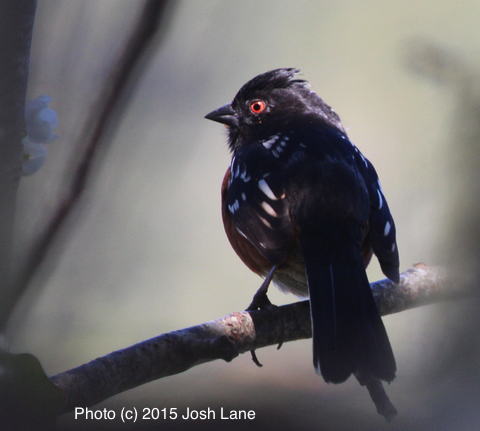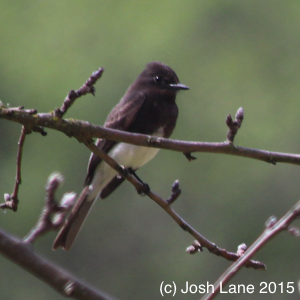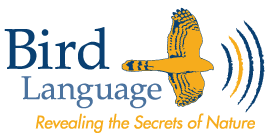Article by Josh Lane, BirdLanguage.com staff writer
Spring is an exciting time to watch bird language. In addition to meeting their basic survival needs, birds must focus on the tasks of territorial defense, courtship, and raising their young. This makes for an interesting time in the field. As the transition to early summer occurs, there still are many unique opportunities to observe bird behavior.
This article shares a few tips for the season – hopefully this will inspire your nature connection time in your local favorite nature spots!
 Bird Territories “101”
Bird Territories “101”
A bird’s territory can grow and shrink as the season progresses. In some bird species, males arrive first on the breeding grounds and establish their core territories. Females arrives shortly thereafter, and males work hard to entice a mate and maintain their territories. Depending on the species, one or both members of a pair may work on nest building and egg brooding.
The size of the territory can vary with the food sources available nearby – if a bird has to travel further to find the food it needs, a larger territory may form. Song is used to warn away other males of the same species from intruding into the territory, or to attract a female and demonstrate fitness (it takes a lot of energy to sing!).
Nestlings tend to be fiercely guarded by parent birds. The core zone around the nest is the center of the bird’s springtime territory. American robins are quite vocal when their fledglings – not yet airworthy – are on the ground and vulnerable to predators such as house cats.
Listen for the “Teek! Teek! Tut tut tut” alarms of parent robins (track 3 in our audio library) perched up above their grounded young ones, a good indication of a nearby ground predator. As birds can have multiple clutches of young, this behavior can extend farther into the season.
Bird Language Tips for Spring & Early Summer:
 Song Posts –
Song Posts –
Spring is a great time to watch for frequently used song posts, such as fences, particular branches, and other natural landing spots with a view. Song sparrows, for example, often fly from one song perch to another as they tour their territory. Knowledge of song perches can help an observer to chart a bird’s territory.
Counter Song –
When a bird sings, a nearby bird may respond with a song of its own. For example, practice listening not just to the robin in your own yard, but also to the responses of robins in more distant yards and look for call and responses behaviors. Counter singing helps establish and maintain territorial boundaries.
Wing Flipping –
Watch for “wing flipping”, which is often utilized by female birds during courtship or by fledglings begging for food from the parent birds. In this behavior, a bird rapidly shakes its wings back and forth while perched, sometimes uttering begging or contact notes. If you see wing flipping, check to see if it is a fledgling bird – often a fledgling can be told by the “fluffy” look of its juvenile feathers.
These are just a few bird behaviors to continue watching as the season progresses. May your nature connection time be enjoyable and nourishing!
Photos & Text (c) 2014 Josh Lane
About the Author:
 Josh Lane is an avid wildlife tracker and bird language observer. He contributed to the “How to Learn Bird Language” section of the book, What the Robin Knows, and developed the Backyard Bird Language online course. Josh is a nature connection mentor with 8 Shields in Northern California, and has presented bird language trainings at events around North America, including the 2013 National Audubon Conference.
Josh Lane is an avid wildlife tracker and bird language observer. He contributed to the “How to Learn Bird Language” section of the book, What the Robin Knows, and developed the Backyard Bird Language online course. Josh is a nature connection mentor with 8 Shields in Northern California, and has presented bird language trainings at events around North America, including the 2013 National Audubon Conference.
